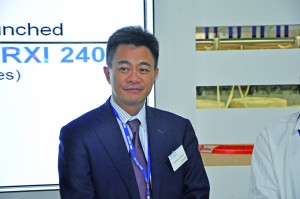
India has traditionally been a strong player in the spinning segment. The next wave of growth and transformation is happening in the weaving segment, thanks to the Government push to modernize Indian weaving. Toyota has strong linkages with the Indian textile industry, both in the spinning and weaving segments. It has played a highly critical role in the weaving revolution in India. Mr. Susumu Toyoda, Managing Director, Toyota Textile Machinery, spoke in detail on the company’s presence in the Indian market.
Excerpts…
Question: Can you tell us more about the growth of Toyota Industries Corporation?
Answer: Toyota Industries Corporation was founded in 1926 by Sakichi Toyoda to manufacture and sell automatic looms which he had invented and perfected. Ever since, the group has promoted diversification and expanded the scope of its business to include textile machinery, automobiles (vehicles, engines, car air-conditoning compressors, etc.), materials handling equipment, electronics, and logistics solutions. With production bases in North America, Europe, and Asia (China, India, Indonesia and Vietnam), as well as a worldwide sales network centered around materials handling equipment and textile machinery segments, the group has now worldwide operations.
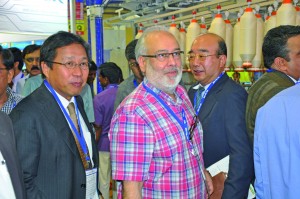
For the fiscal ended March 31, 2011, Toyota Industries Corporation achieved sales of JPY 1.48 trillion yen. It is traded on the Tokyo, Osaka and Nagoya stock exchanges.
Q: How many installations have you in India?
A: About 6,400 units of air jet loom and about 2,700,000 spindles of ring spinning frame.
Q: What, according to you, is the potential of selling looms in India on an annual basis?
A: Air jet loom, about 1,000-1,500 units and ring spinning frame about 300,000-450,000 spindles.
Q: How do you take care of the sales & service?
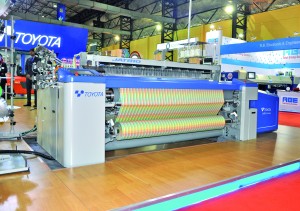
A: Our sales and service staff keep close contact with customers and build reliable relationship with them. They visit customers on a regular basis and demonstrate product performance, offer the reassurance of product quality and generate trust through direct communication. We prefer direct communication to communication through the media as a basic concept because we believe that the customer needs are more diversified. Eventually, our goal is to gain the trust from our customers through dedicated sales and service activities.
Q: Looking at the current scenario, what position do you envisage for your organisation in the coming days?
A: The overall world economy is positive in outlook and is recovering from the global crisis of 2008-2009, thanks to the contribution to economic growth of industrial nations in Asia like China and India. However, the European debt crisis is still unresolved. This impacts the high value of the yen. On the other hand, we can see the rising labor cost and shortage of skilled labor manpower faced by textile industries in China and India as well as the rising cost of energy. Hence our focus on “saving the running cost for customers’ through energy saving system and automation. Also we are offering “eco-friendly” devices based on Japanese technology.
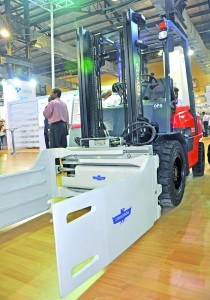
Q: What about the latest technological developments to the company credit?
A: A new model of air jet weaving machine “JAT810” with 8-color, 16 hairiness-frame style and with air saving monitoring system was exhibited at ITME. This completely new weft insertion concept for the air-jet loom reduces air consumption by 20 per cent.
Another development is the new ring-spinning frame “RX300” with energy saving technology and capability of up to 1,824 spindles per machine.
As for the combing machine, a new ‘TCO 12’ winder is being jointly produced by Toyota Industries Corporation and Trüetzschsler GmbH & Co. of Germany with a 2-twin drive, count control levelling system and combing optimiser which offer consistent, reproducible qualities even at highest performance and easier operation than conventional combers.
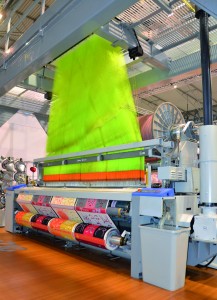
Q: How do your machines cater to the new developments related to technical yarns and textiles?
A: Textile machinery for technical yarns and textile are required for high quality and safety standards in order to catch up with the wide-ranging customer product requirements. Acknowledging this fact, we always focus on developing the technology and innovation of versatility products from our air jet looms to meet customer expectations.
Q: Are there any plans for expansion or diversification by your organization? May we request you to share the details of the same?
A: As a basic concept, we retain our R&D centre in Japan in order to keep providing innovative new machines to our customers. We also keep expanding our service network.